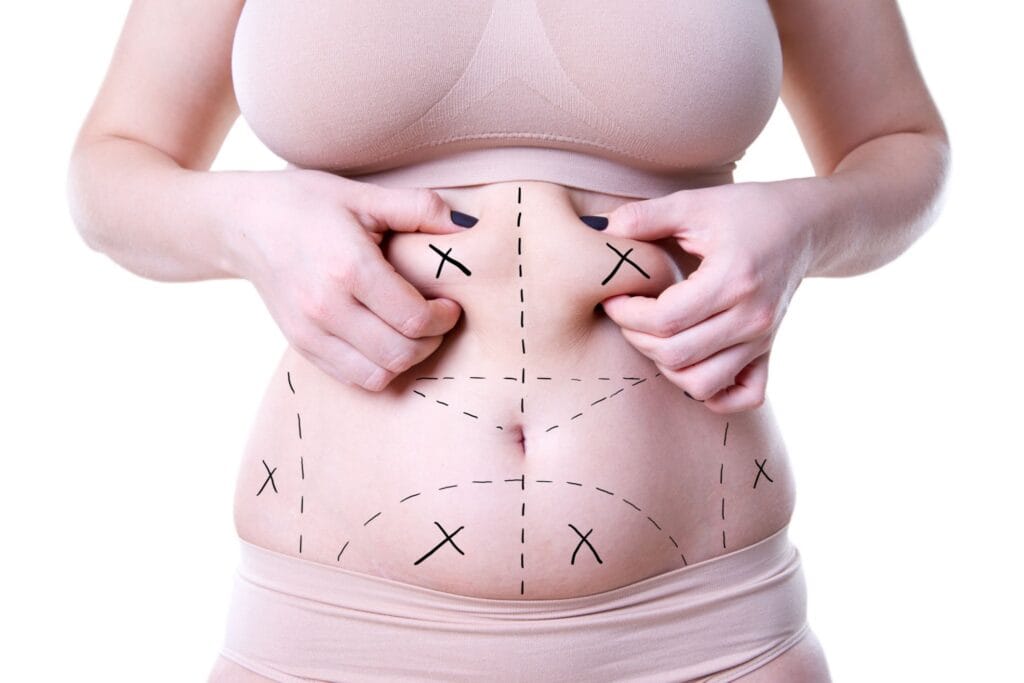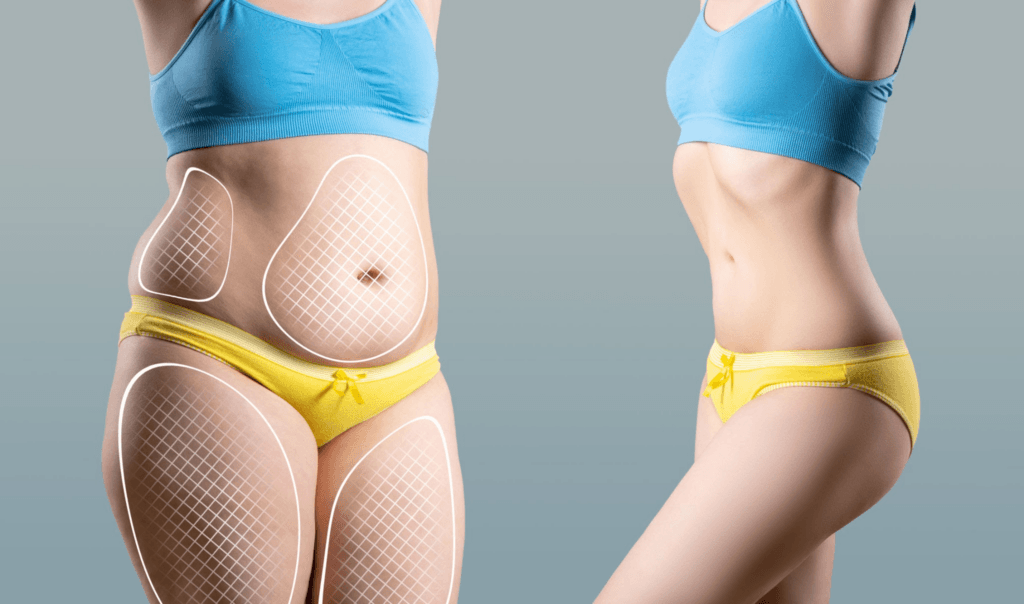Liposuction cost remains a significant consideration for individuals contemplating body contouring. This surgical procedure has surged in popularity over recent years, driven by advancements in technology and a heightened awareness of body aesthetics. Understanding the intricacies of liposuction, particularly the costs associated with various techniques, is essential for informed decision-making. In this blog post, we will explore the different aspects of liposuction, examining how costs can vary widely depending on several critical factors.
Table of Contents
Understanding Liposuction
Liposuction is a cosmetic surgical procedure designed to remove excess fat deposits from specific areas of the body. The primary purpose of this surgery is to reshape and contour the body, enhancing aesthetic appeal. Commonly targeted areas include the abdomen, thighs, arms, and buttocks. Patients often seek liposuction to address localized fat that does not respond to diet and exercise.
This procedure involves the use of suction techniques to eliminate fat, resulting in a smoother and more proportionate body shape. It is crucial to recognize that liposuction is not a weight-loss method but rather a body sculpting procedure for individuals who are near their ideal weight. Understanding this distinction helps set realistic expectations regarding the outcome and the associated liposuction costs.
The effectiveness of liposuction can vary based on the technique employed, the skill of the surgeon, and the patient’s unique anatomy. Surgeons often conduct a thorough assessment before recommending the best approach for each individual. This evaluation is essential to determine not only the desired results but also the potential liposuction cost associated with the selected technique.
In summary, liposuction serves as an effective solution for individuals looking to enhance their body contours. However, it is vital for prospective patients to have a comprehensive understanding of the procedure’s purpose and limitations, particularly concerning the costs that accompany various liposuction techniques.

Factors Influencing Liposuction Costs
Several factors contribute to the overall liposuction cost, significantly impacting the financial considerations for prospective patients. Geographic location plays a crucial role; prices often vary from urban to rural settings. In metropolitan areas, where the demand for cosmetic procedures is high, costs tend to be elevated due to increased competition and facility operating expenses.
Surgeon expertise also significantly influences liposuction costs. Highly experienced and board-certified surgeons typically charge higher fees, reflecting their skill level and the quality of care provided. Patients should consider this aspect carefully, as choosing a qualified surgeon can lead to better outcomes and reduced risks during the procedure.
The type of anesthesia utilized during liposuction further affects costs. Local anesthesia is generally less expensive than general anesthesia, which requires additional monitoring and post-operative care. Patients must weigh the benefits of comfort and safety against the associated costs of their anesthesia choices.
Lastly, facility fees and additional costs, such as post-operative care, contribute to the overall liposuction cost. Surgical centers with advanced technologies and high standards of care will naturally charge higher fees. Understanding these factors helps patients budget effectively for their liposuction journey, ensuring a smoother experience.
Comparison of Liposuction Techniques
Liposuction techniques vary widely, each offering distinct benefits and associated costs. Tumescent liposuction is one of the most common methods, involving the injection of a solution into the targeted fat areas before suctioning. This technique enhances patient comfort and reduces blood loss, but it also has a specific cost structure based on the volume of solution used and the complexity of the procedure.
Ultrasound-assisted liposuction (UAL) employs sound waves to liquefy fat before removal, allowing for smoother extraction. While UAL can lead to improved contouring results, the additional technology and equipment required elevate the liposuction cost compared to traditional methods. Patients considering UAL should evaluate whether the enhanced outcomes justify the higher financial commitment.
Laser-assisted liposuction (LAL) utilizes laser energy to melt fat cells before removal. This minimally invasive approach often results in reduced recovery times and less bruising. However, the advanced technology required for LAL comes at a premium, and patients must consider this factor when budgeting for their procedure.
Power-assisted liposuction (PAL) employs a specialized device to assist in fat removal, improving efficiency and reducing surgeon fatigue. While PAL may offer advantages in terms of precision and patient comfort, the equipment’s cost impacts the overall liposuction cost. As patients explore their options, comparing these techniques helps them make informed decisions that align with their aesthetic goals and financial resources.
Average Costs of Liposuction by Technique
Understanding the average costs of liposuction by technique provides essential insights for potential patients. Tumescent liposuction typically ranges from $2,000 to $7,000, depending on the procedure’s complexity and the surgeon’s expertise. This method is widely regarded as the standard approach, making it a common choice for patients seeking reliable outcomes at a reasonable price.
Ultrasound-assisted liposuction generally falls within the range of $3,000 to $10,000. The advanced technology and specialized training required for this technique justify the higher price point. Patients should consider whether the anticipated benefits align with their budgetary constraints when opting for UAL.
Laser-assisted liposuction presents a similar price range, typically between $3,500 and $12,000. The enhanced results and shorter recovery times often appeal to individuals willing to invest more for a premium experience. It is essential for prospective patients to weigh these factors against their aesthetic goals and financial situations.
Power-assisted liposuction averages between $3,000 and $9,000. While this technique offers advantages in precision, patients must assess whether the additional cost is warranted for their specific needs. By understanding these average costs, patients can make informed decisions regarding their liposuction options and overall financial planning.
Here are some comparison tables focused on liposuction costs and techniques, including information relevant to Turkey. These tables provide a clear overview of different liposuction methods, their average costs, and factors influencing these costs, particularly within the context of Turkey.
Table 1: Liposuction Techniques Comparison
| Liposuction Technique | Description | Average Cost in Turkey (USD) | Advantages | Disadvantages |
|---|---|---|---|---|
| Tumescent Liposuction | Injection of a fluid to minimize bleeding and pain. | $2,000 – $4,500 | Minimal pain, good results, safer procedure. | Requires skilled surgeon for best results. |
| Ultrasound-Assisted Liposuction | Uses ultrasound energy to liquefy fat before suction. | $3,000 – $6,000 | Effective for fibrous areas, less bruising. | Higher cost, requires specialized equipment. |
| Laser-Assisted Liposuction | Uses laser technology to melt fat before removal. | $3,500 – $7,000 | Minimal invasiveness, shorter recovery time. | Can be more expensive, results may vary. |
| Power-Assisted Liposuction | Uses powered cannulas to remove fat more efficiently. | $3,000 – $5,500 | Faster procedure, less surgeon fatigue. | Still requires surgical skill, higher equipment cost. |
Table 2: Factors Influencing Liposuction Costs
| Factor | Description | Impact on Cost |
|---|---|---|
| Geographic Location | Costs vary significantly between cities (e.g., Istanbul vs. smaller towns). | Higher costs in metropolitan areas. |
| Surgeon’s Experience | Board-certified and experienced surgeons charge more. | Higher fees for skilled professionals. |
| Type of Anesthesia | Local anesthesia is cheaper than general anesthesia. | Cost increases with general anesthesia. |
| Facility Fees | Quality of the surgical center impacts pricing. | Premium facilities charge higher fees. |
| Post-Operative Care | Additional costs for follow-up visits and medications. | Can add up significantly to the total cost. |
Table 3: Average Liposuction Costs in Turkey by City
| City | Average Cost Range (USD) | Notable Clinics/Surgeons |
|---|---|---|
| Istanbul | $2,500 – $12,000 | NewMe Health, Istanbul Beautiful, Liv Hospital |
| Ankara | $2,000 – $10,000 | Ankara Medicana Hospital, Cankaya Hospital |
| Izmir | $2,500 – $9,000 | İzmir Health Park, Ege University Hospital |
| Antalya | $2,500 – $8,000 | Anadolu Medical Center, Mediterra Health |
| Bursa | $2,000 – $7,500 | Bursa Hospital, Acibadem Bursa Hospital |
Table 4: Liposuction Cost Breakdown by Technique in Turkey
| Technique | Average Cost (USD) | Typical Procedure Duration | Recovery Time | Common Areas Treated |
|---|---|---|---|---|
| Tumescent Liposuction | $2,000 – $4,500 | 1 – 2 hours | 1 – 2 weeks | Abdomen, thighs, flanks |
| Ultrasound-Assisted Liposuction | $3,000 – $6,000 | 1.5 – 3 hours | 2 – 3 weeks | Thighs, back, abdomen |
| Laser-Assisted Liposuction | $3,500 – $7,000 | 1 – 2 hours | 1 – 2 weeks | Abdomen, arms, chin |
| Power-Assisted Liposuction | $3,000 – $5,500 | 1 – 2 hours | 1 – 2 weeks | Hips, thighs, abdomen |
These tables provide a structured and informative overview of the different aspects of liposuction, particularly as they relate to Turkey, helping prospective patients make informed decisions regarding their options and associated costs.
Insurance and Financing Options
Liposuction is generally considered a cosmetic procedure, and as such, it often falls outside the realm of insurance coverage. However, there are exceptions, particularly if liposuction is deemed medically necessary, such as in cases of lipedema or other fat distribution disorders. Patients should consult with their insurance providers to clarify potential coverage options and requirements.
For those seeking liposuction as a cosmetic enhancement, exploring financing options is crucial. Many surgical centers offer payment plans or financing arrangements to help patients manage the liposuction cost. These plans often involve monthly payments, allowing individuals to budget effectively without compromising their aesthetic goals.
Additionally, third-party financing companies specialize in medical procedures, offering loans specifically for cosmetic surgery. Patients should carefully evaluate the terms and interest rates associated with these financing options to ensure they align with their financial capabilities.
In summary, while liposuction may not always be covered by insurance, various financing options exist to facilitate access to this popular procedure. Thorough research and consultation with both surgical centers and financial institutions enable patients to explore the best avenues for funding their aesthetic aspirations.
Conclusion
In conclusion, understanding liposuction cost is paramount for anyone considering this transformative procedure. By grasping the different techniques available, their associated costs, and the factors influencing pricing, prospective patients can make informed decisions that align with their financial resources and aesthetic goals. Thorough research, consultations with qualified surgeons, and careful consideration of financing options empower individuals to navigate the complexities of liposuction effectively.
Ultimately, each patient’s journey is unique, necessitating personalized assessments to ensure the best outcomes. As you embark on this journey toward enhanced body contouring, prioritize gathering information and seeking professional guidance to make choices that will lead to satisfying and successful results.
Transform Your Confidence with Surgyteam!
Join the thousands of satisfied patients who have experienced the exceptional care and expertise of Surgyteam’s renowned plastic surgeons. Whether you’re seeking aesthetic enhancements or reconstructive surgery, our dedicated team in Antalya is here to provide you with the highest quality treatment and personalized care.
FAQ
What is liposuction, and how does it work?
Liposuction is a cosmetic surgical procedure designed to remove excess fat deposits from specific areas of the body, enhancing contour and proportion. The process typically involves the insertion of a thin tube called a cannula into the targeted area through small incisions. Using suction, the surgeon removes unwanted fat, thereby sculpting the body to achieve the desired shape. The most common areas for liposuction include the abdomen, thighs, hips, arms, and neck. Various techniques, such as tumescent liposuction, ultrasound-assisted liposuction, and laser-assisted liposuction, utilize different methods to facilitate fat removal, each with its own benefits and recovery considerations.
What factors influence the cost of liposuction?
Several factors impact the overall cost of liposuction, making it essential for prospective patients to understand these elements when budgeting for the procedure. Geographic location plays a significant role, as prices can vary widely between metropolitan and rural areas. Additionally, the surgeon’s experience and qualifications significantly affect costs; highly skilled and board-certified surgeons typically command higher fees. The type of anesthesia used during the procedure, along with facility fees and potential post-operative care costs, also contribute to the final price. By recognizing these factors, individuals can better prepare for the financial commitment associated with liposuction.
What are the different techniques available for liposuction?
Liposuction encompasses several techniques, each tailored to specific patient needs and desired outcomes. Tumescent liposuction involves injecting a saline solution mixed with anesthesia into the target area, reducing bleeding and discomfort during fat removal. Ultrasound-assisted liposuction (UAL) uses ultrasound energy to liquefy fat before suctioning, making it particularly effective in fibrous areas. Laser-assisted liposuction employs laser technology to melt fat, allowing for a less invasive approach and shorter recovery times. Power-assisted liposuction (PAL) utilizes powered cannulas, enabling more efficient fat removal with less physical exertion from the surgeon. Understanding these techniques allows patients to make informed decisions about which method best suits their goals.
How much does liposuction cost in Turkey?
The cost of liposuction in Turkey varies significantly depending on the chosen technique and geographic location. On average, prices range from $2,000 to $12,000, with major cities like Istanbul generally reflecting higher costs compared to smaller towns. For example, tumescent liposuction typically costs between $2,000 and $4,500, while more advanced techniques such as laser-assisted liposuction may range from $3,500 to $7,000. Factors such as surgeon expertise, facility quality, and any additional post-operative care can further influence the total expense. It is crucial for individuals to gather quotes from various clinics and consider the overall value provided, rather than solely focusing on the lowest price.
Does insurance cover liposuction costs?
Generally, liposuction is considered a cosmetic procedure and is not covered by health insurance plans. However, there are exceptions where insurance may provide coverage if the surgery is deemed medically necessary, such as in cases of lipedema or significant weight loss after bariatric surgery. To determine eligibility for coverage, patients must consult their insurance provider and discuss their specific circumstances. For those without insurance coverage, financing options are often available at clinics, enabling patients to manage costs through payment plans that align with their financial situations.
What is the expected recovery time after liposuction?
Recovery time following liposuction varies based on the individual, the technique used, and the extent of the procedure. Generally, patients can expect to return to light activities within a few days, while more strenuous exercise and activities may require a longer recovery period of up to several weeks. Bruising, swelling, and discomfort are common in the initial recovery phase, but these symptoms gradually subside. Surgeons often recommend wearing compression garments for several weeks to aid in healing and contouring. It is crucial for patients to follow post-operative care instructions carefully and attend follow-up appointments to ensure optimal recovery and results.



